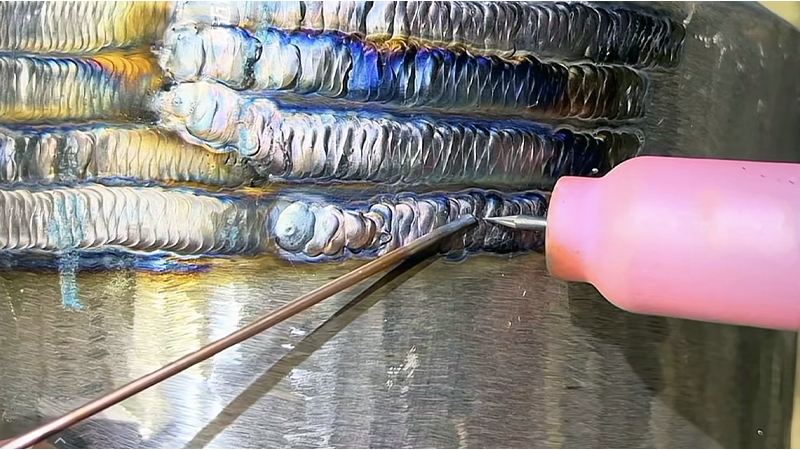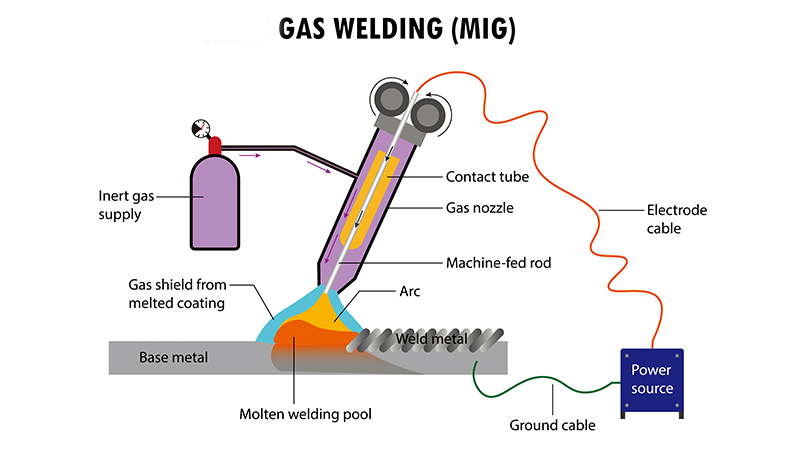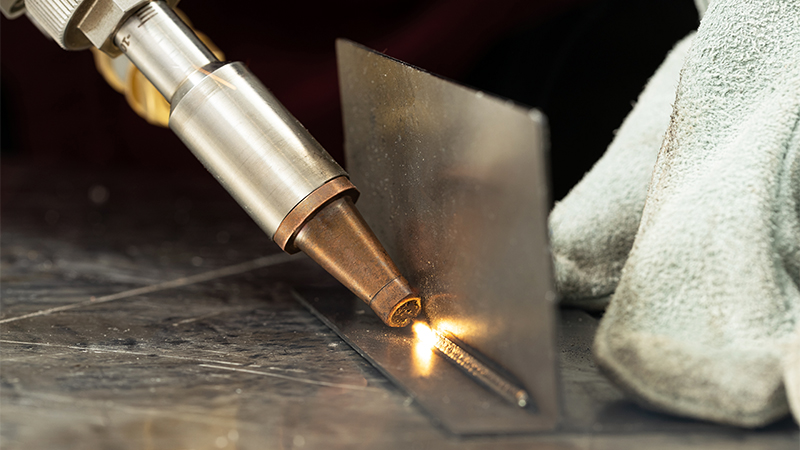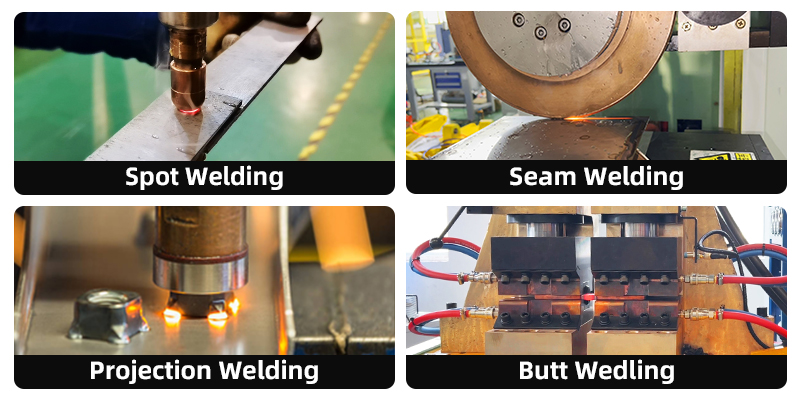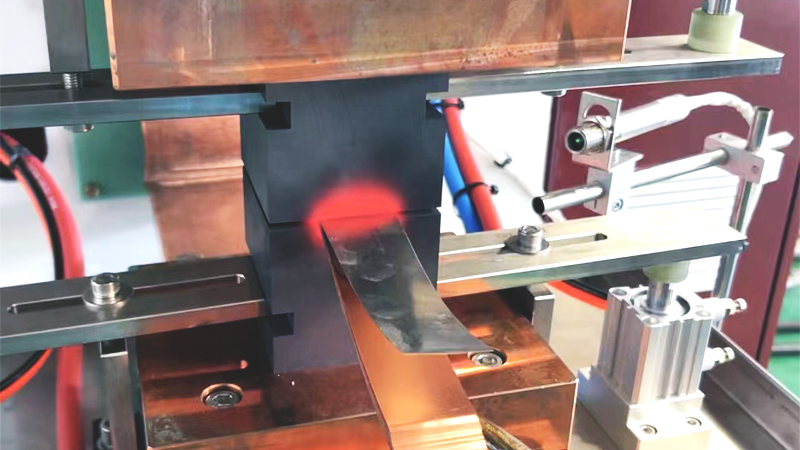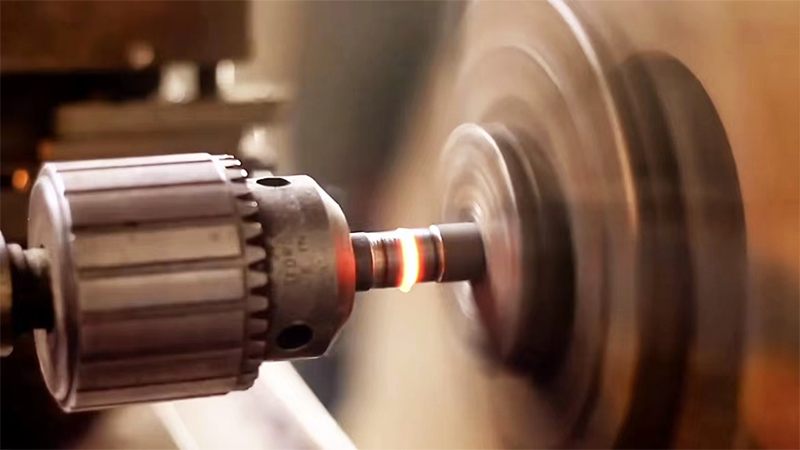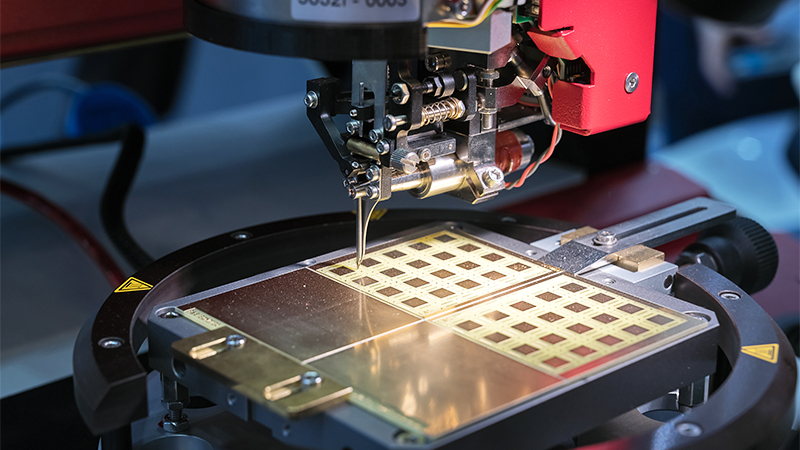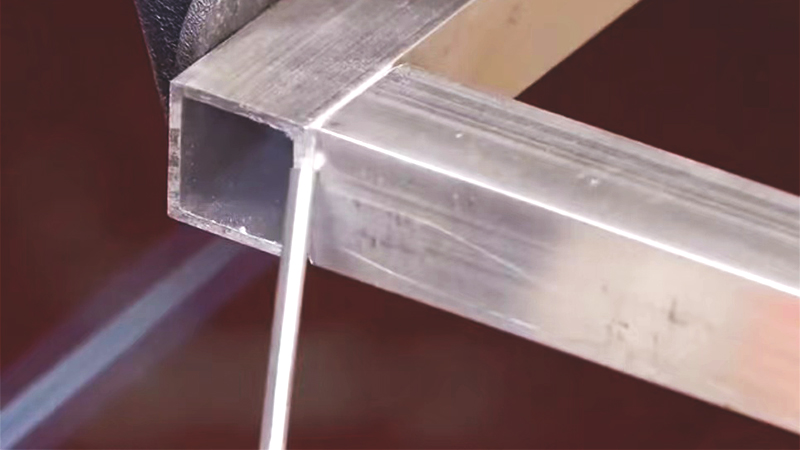Sheet Metal welding is used in many industries. Whenever you need to join metal parts, you'll consider how to weld them. Welding technology has become very advanced, and choosing the right welding method can make your job much easier and more efficient. This article will guide you through understanding sheet metal welding and help you find the right welding method.
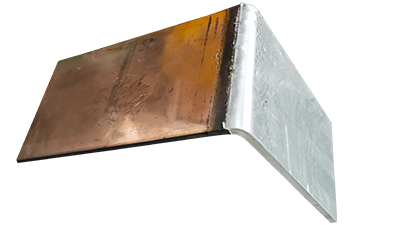
What Is Sheet Metal Welding?
Sheet metal welding is a material processing technology, which refers to the connection of two or more separate metal parts into one by some method. With the development of industrial technology, welding technology is more and more widely used, which is an important process in the metal processing of the manufacturing industry.
What are the methods of metal welding?
There are many kinds of metal welding methods, according to the state and process characteristics of the metal in the welding process, metal welding methods are mainly divided into three categories: fusion welding, pressure welding and brazing.
Fusion Welding
Fusion welding is a method of joining metal parts by heating and melting them together. This method does not require pressure. The interfaces of the two workpieces are heated, causing the metal to generate significant atomic force, forming a liquid state at the heated area. The metal atoms of the two workpieces diffuse fully and merge. When the molten metal cools, it forms a strong welded joint.
Common fusion welding techniques include arc welding, gas welding, and laser welding.
Arc Welding
Arc welding is powered by an electrical source that discharges between the electrode and the two workpieces to form an arc. This arc converts to heat, melting the electrode and the workpieces, joining the metals together. During the welding process, low voltage and high current generate high temperatures and intense light, burning the electrode and workpieces to create a molten pool that cools to form a weld.
This welding method has a wide range of applications and can be used to weld various metals such as stainless steel, aluminum, copper, and high-carbon steel. Because arc welding equipment is portable and easy to operate, it is widely used in industries like machinery manufacturing, construction, and shipbuilding. For example, it is used for rebar connections in construction. Additionally, arc welding is frequently employed in equipment repair and railroad track maintenance.
Arc welding typically requires an arc welding machine, welding rods, and a face shield. It is a low-cost and widely used welding method. However, due to its technical difficulty, the quality of the weld largely depends on the skill level of the welder.
Gas Welding
Gas welding uses two types of gas: a fuel gas and an oxidizing gas. The combustion of these gas generates heat, which is used to melt the metal materials and welding rod that are continuously fed between the two workpieces, completing the metal connection.
Gas welding is often used for welding metals such as steel, aluminum, and copper. It offers advantages like flexibility in application, no limitations on the working environment, and simple operation. Additionally, it does not require electricity, making it widely used for outdoor work and on construction sites for metal connections. If you need to repair a metal pipe, gas welding is an excellent choice.
However, gas welding has its limitations. The quality of the weld is significantly influenced by the quality of the welding rod, and the welded joints are prone to deformation. Additionally, the production efficiency is relatively low.
Laser Welding
Laser welding uses a laser beam as its heat source. The laser beam hits the edges of the metal workpieces, generating heat and forming a weld pool. When the laser moves away, the molten metal edges cool and bond together. This method can be used for overlapping welds, butt welds, and sealed welds in various industrial applications.
Laser welding has a fast welding speed and high efficiency, and it can also be used for welding non-metals. It is an advanced welding technology widely used in industries such as automotive manufacturing, electronics, and jewelry. However, it cannot penetrate thicker materials, so it is best suited for thin-walled materials. Compared to other welding methods, laser welding equipment tends to be more expensive.
Press Welding
Unlike fusion welding, pressure welding requires applying a certain amount of pressure to the metal during the welding process. The metal materials do not melt into a liquid state but remain solid. Pressure welding involves heating the metal joints to increase their plasticity, and then applying pressure to the plasticized metal, resulting in a stronger weld joint. Therefore, pressure plays a crucial role in the process.
With the development of industrial economies, many new materials and products have emerged, leading to continuous innovations in pressure welding technology. The main pressure welding techniques currently include resistance welding, diffusion welding, friction welding, and ultrasonic welding.
Resistance Welding
Resistance welding uses electrical current to heat the connection point of metal workpieces while applying pressure through electrodes to complete the weld. It is commonly used for welding stainless steel, copper, aluminum, and carbon steel. Due to its high and consistent welding quality, resistance welding plays a significant role in the automotive, electronics, and aerospace industries. With advancements in technology, resistance welding has increasingly incorporated automation, further boosting production efficiency.
Resistance welding can be divided into four methods: spot welding, projection welding, seam welding, and butt welding. For example, if you need to weld an automotive part, such as attaching a nut to a metal plate, you can use projection welding. However, resistance welding equipment is generally bulky and not easily movable, limiting its use to specific settings. Each time you weld different metal materials or thicknesses, the parameters need to be adjusted, making it more suitable for high-volume welding of metal components.
Diffusion Welding
Diffusion welding, also known as diffusion bonding, involves heating and applying pressure to metal surfaces during welding. This process allows atoms and molecules of the metal materials to diffuse and bond under high temperature and pressure. Diffusion welding can be used for both similar and dissimilar materials, commonly connecting copper, aluminum, and composite materials.
This method can simultaneously weld multiple joints in an assembly, such as welding 20 layers of 0.1 mm copper foil. Diffusion welding creates strong joints that are resistant to deformation, usually eliminating the need for further processing. However, it also has drawbacks, including low production efficiency and high equipment costs.
Friction Welding
Friction welding is a welding process that uses heat generated from the relative frictional motion between workpieces under pressure. It is an efficient, energy-saving method that produces high-quality welds. Compared to flash butt welding, friction welding has a smaller heat-affected zone and is better suited for joining dissimilar metals.
Friction welding is unique and offers advantages such as low power consumption and environmental friendliness, making it popular in industries like mechanical manufacturing, aerospace, and energy. However, it is generally only suitable for connecting metal rods and pipes of the same diameter. Once the shape and assembly position of the workpieces are fixed, it becomes challenging to weld.
Ultrasonic Welding
Ultrasonic welding uses high-frequency vibrations generated by ultrasonic waves to create friction, deformation, and heat at the metal contact surfaces. Pressure is applied by upper and lower sound horns to complete the welding process. This is a unique welding method that does not involve electrical current passing through the workpieces or external heat sources, and it shares some characteristics with friction welding and diffusion welding.
Ultrasonic welding can be used for a variety of materials, including both similar and dissimilar metals such as copper, aluminum, gold, and silver. However, it is more commonly used for welding non-metallic materials like ABS, PP, and PC, where it produces even better results.
Brazing Welding
Brazing is a welding methodwhere a filler metal with a melting point below that of the workpieces is heated and melted to fill the gaps between two metal workpieces, completing the metal joining process. Unlike fusion welding and pressure welding, this method does not require melting the workpieces or applying pressure. Brazing is primarily used for joining overlapped workpieces, with gap sizes typically ranging from 0.01 to 0.1 millimeters.
Today, brazing is increasingly used across industries such as machinery, electronics, instruments, and lighting. The quality of brazing largely depends on the filler metal used. Therefore, when brazing metal workpieces, it's important to choose a filler metal with good wetting properties that can effectively fill the joints. Brazing is categorized into soft brazing and hard brazing based on the melting point of the filler metal.
Soft Soldering
Soft soldering uses filler metals with melting points below 450 degrees Celsius. The joints created through soft soldering have lower strength and poor heat resistance. It is commonly used for electrical connections in precision electronic products and soldering with soldering irons. If strength requirements are not critical and the melting point of the filler metal is higher than that of the metal being soldered, soft soldering can be employed.
Hard Soldering
Brazing with high-melting-point filler metals, known as hard soldering, uses filler metals with melting points above 450 degrees Celsius. Joints created through hard soldering are stronger compared to those from soft soldering. Hard soldering commonly employs materials such as silver, aluminum, copper, and nickel. The choice of filler metal depends on the characteristics of the workpiece materials and the performance requirements of the joint. Hard soldering is generally suitable for stainless steel, aluminum alloys, copper, and other materials with high strength requirements. It is used for joints that operate under high temperatures and finds extensive applications in the aerospace, electronics, and electrical industries.
Conclusion
There are various types of metal welding, and the ones mentioned above are among the more common methods. As welding technology continues to advance, more and more welding methods are emerging. When considering how to weld your metal workpieces, it's important to consider aspects such as the material of the workpiece, its shape, the work environment, and more. Choosing the appropriate welding method based on these factors is crucial.
Post time: Jun-19-2024



